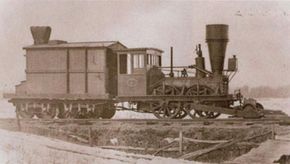"John Bull" Steams Again
In 1980, John H. White, Jr., and his colleagues at the Smithsonian Institution pondered how to mark the 150th anniversary of the locomotive "John Bull." Dare they carefully steam up and actually operate the oldest locomotive in America? After all, it did spend 35 years in rough railroad service, and the best way to learn how machinery actually worked is to operate it. There were risks, but much to be learned in the process.
The firm of Robert Stephenson in England constructed the locomotive for the Camden and Amboy Railroad and delivered it in August of 1831. By 1866, the "John Bull" was out of service-but the railroad recognized its historic importance and preserved it intact. After the Pennsylvania Railroad absorbed the C&A in 1871, it exhibited the "John Bull" at various expositions and in 1885 presented the locomotive to the Smithsonian Institution.
Advertisement
Almost a hundred years later, Smithsonian staff and volunteers completely disassembled and inspected the ancient engine. After many tests and lots of tender care, the "John Bull" steamed again, hauling its companion passenger car over branch lines near Washington, D.C. Over a period of several weeks in the fall of 1981, the locomotive taught its keepers more about early steam power than any textbook possibly could. It looked, smelled, sounded, and behaved exactly like the thousands of steam locomotives that followed it -- to the delight of curators and rail fans alike.
Advertisement

